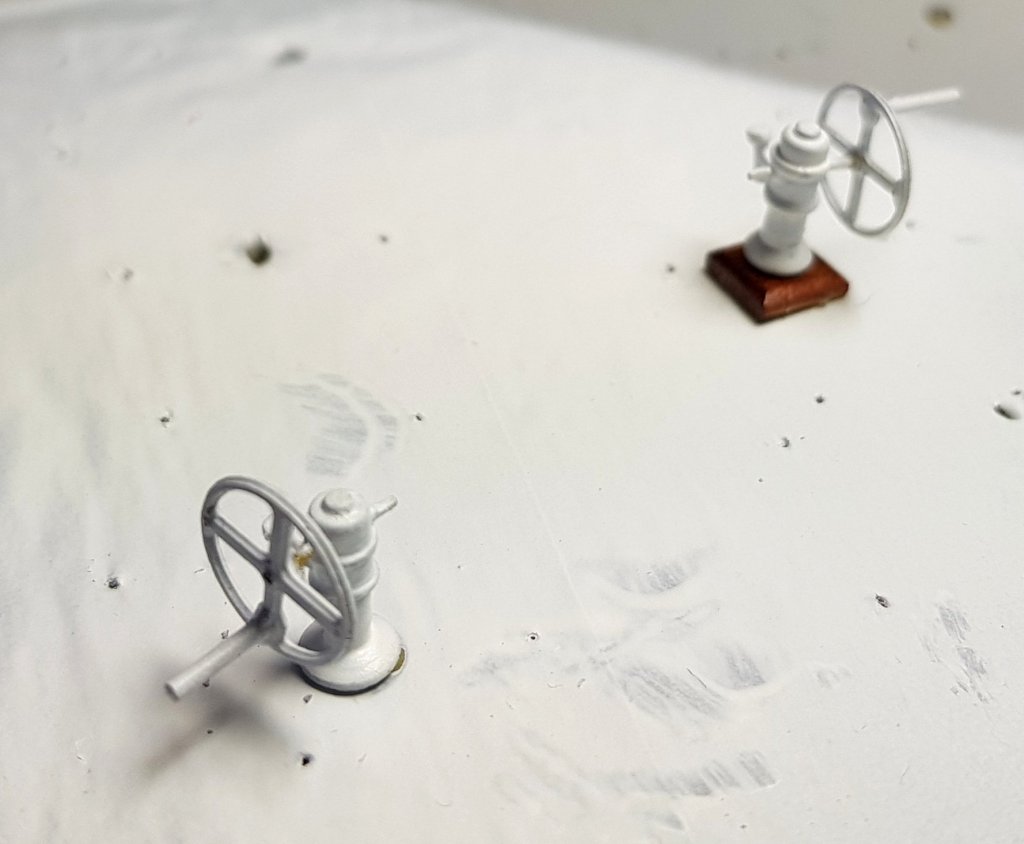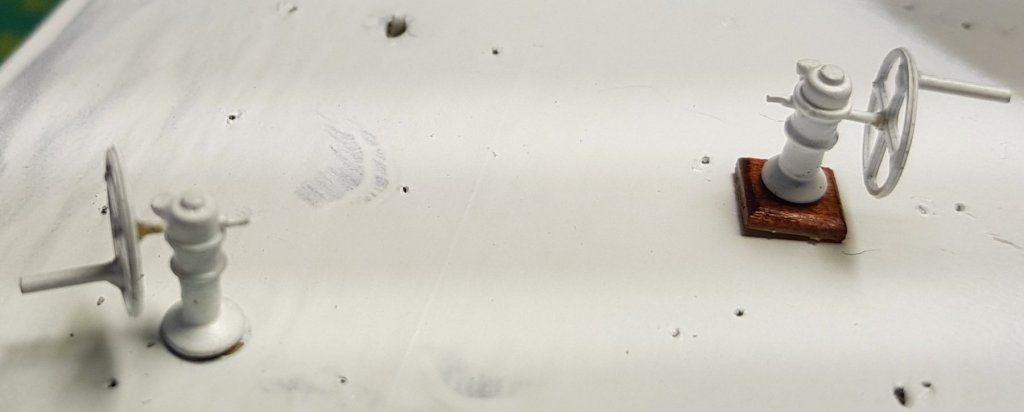-
Posts
5,951 -
Joined
-
Last visited
Content Type
Profiles
Forums
Gallery
Events
Everything posted by BANYAN
-
Great ideas and technique Michael, the support for the saw blade is one that I will definitely file away. cheers Pat
- 2,215 replies
-
Nice work Greg. Those cranes may be just what I am looking for also Are they part of the kit PE or aftermarket? cheers Pat
-
Nice work G.L. , really like the iron (brass) knees cheers Pat
- 219 replies
-
- smack
- cross-section
-
(and 2 more)
Tagged with:
-
Oh you do love a challenge Greg, that PE looks more than a little difficult! Good luck The paint effect is very good and representative of a well worn 'work horse' of the fleet. cheers Pat
-
Sitting at the back has its advantages mate; I can heckle and throw things further than you could throw them back and up Look forward to seeing your efforts on this build also. cheers Pat
-
Taking a back row seat to see what you do with this one Carl, looks like you have taken a liking to RCN ships? cheers Pat
-
Hi Gerald, a happy New Year to you and your family. Thanks for the pointer to your website. As has been commented but much more experienced modellers, I also find your work inspirational. Whenever I run into a metalsmithing 'roadblock' I always return to your work and see what is achievable - that usually gets me motivated, not that I am anywhere near your skill level. cheers Pat
- 281 replies
-
- falls of clyde
- tanker
-
(and 2 more)
Tagged with:
-
Welcome back to the 'fray' agan Mark; have missed your updates. I like that building jig; and, BTW, you make me extremely jealous with the flexibility/capability that 'death star' provides for you happy New Year! cheers Pat
-
Fantastic job Rod; she came up a real 'treat' for the eyes and is a compliment to your efforts in building her. I really like that lantern, had not noticed it before. Happy New Year mate, cheers Pat
- 108 replies
-
- endeavour
- caldercraft
-
(and 1 more)
Tagged with:
-

My drill to mill adapter
BANYAN replied to steamschooner's topic in Modeling tools and Workshop Equipment
Clever adaption; look forward to seeing some of the resulting work. cheers Pat -
That framing looks good Ben, glad to see you making such good progress. cheers Pat
- 889 replies
-
They have come out very nicely Steven; your persistence has paid dividends. Every sub/mini-project is a learning process; the next batch should be faultless masterpieces then cheers Pat
-

HMCSS Victoria 1855 by BANYAN - 1:72
BANYAN replied to BANYAN's topic in - Build logs for subjects built 1851 - 1900
Thanks Denis; a great christmas thanks mate. Wishing you and the family a happy and safe new year. cheers Pat- 1,013 replies
-
- gun dispatch vessel
- victoria
-
(and 2 more)
Tagged with:
-

Best glue for paper templates?
BANYAN replied to andante's topic in Modeling tools and Workshop Equipment
I have used a spray-on (pressure pak) 'temporary' fix glue from 3M and another company in the past with some success - can't remember the brand name of the other but available in art supply stores. Only issue was that sometimes the edge of the paper would lift when cutting on the saw (especially with the scroll saw) which I think was due to the offset teeth of the blades I was using. cheers Pat -

HMCSS Victoria 1855 by BANYAN - 1:72
BANYAN replied to BANYAN's topic in - Build logs for subjects built 1851 - 1900
Thanks all for the likes and comments; much appreciated. I hope all had a very happy Christmas, and wishing you all the best in health, happiness and prosperity for 2019. cheers Pat- 1,013 replies
-
- gun dispatch vessel
- victoria
-
(and 2 more)
Tagged with:
-
Hi Ilhan, As John has suggested, some steering control rods were above deck. The attached photo shows control chains but the principle is the same. I have seen, but do not have a photo, where these chains ran inside an inverted 'U' style protective cover bolted to the deck (not flush) also. I hope this helps? cheers Pat
-

HMCSS Victoria 1855 by BANYAN - 1:72
BANYAN replied to BANYAN's topic in - Build logs for subjects built 1851 - 1900
Hi folks a small update. These only stand 11mm tall and the thicker looking handles only 0.8mm - may change the handles as they look a little too thick but were supposed to be more substantial for two men to operate it. The downton pumps are assembled with one dry fitted to the base/plinth n which it will stand on deck. The next thing is to clean them up a bit and a final coat of white. Wishing all a very merry and safe festive season cheers Pat- 1,013 replies
-
- gun dispatch vessel
- victoria
-
(and 2 more)
Tagged with:
-
Merry Christmas John, and best wishes for a healthy 2019. I look forward to seeing your Meteor progress. cheers Pat
-
Merry Christmas to you too mate! May santa make all your modelling wishes come to reality cheers Pat
- 1,208 replies
-
- great republic
- clipper
-
(and 1 more)
Tagged with:
-
You have done remarkable work with a limited toolset Steven; congratulations are well deserved. Merry Christmas Pat
About us
Modelshipworld - Advancing Ship Modeling through Research
SSL Secured
Your security is important for us so this Website is SSL-Secured
NRG Mailing Address
Nautical Research Guild
237 South Lincoln Street
Westmont IL, 60559-1917
Model Ship World ® and the MSW logo are Registered Trademarks, and belong to the Nautical Research Guild (United States Patent and Trademark Office: No. 6,929,264 & No. 6,929,274, registered Dec. 20, 2022)
Helpful Links
About the NRG
If you enjoy building ship models that are historically accurate as well as beautiful, then The Nautical Research Guild (NRG) is just right for you.
The Guild is a non-profit educational organization whose mission is to “Advance Ship Modeling Through Research”. We provide support to our members in their efforts to raise the quality of their model ships.
The Nautical Research Guild has published our world-renowned quarterly magazine, The Nautical Research Journal, since 1955. The pages of the Journal are full of articles by accomplished ship modelers who show you how they create those exquisite details on their models, and by maritime historians who show you the correct details to build. The Journal is available in both print and digital editions. Go to the NRG web site (www.thenrg.org) to download a complimentary digital copy of the Journal. The NRG also publishes plan sets, books and compilations of back issues of the Journal and the former Ships in Scale and Model Ship Builder magazines.




